The Microsoft Surface Pro (2017) Review: Evolution
by Brett Howse on June 15, 2017 9:00 AM ESTDisplay Analysis
Microsoft has been the PC maker that has focused on display quality more than any other. And in only a few generations, they have become known for having the best displays of any company. It could be argued (and I would argue it strongly) that the Surface Studio has the best display of any consumer device for sale right now, even if Windows doesn’t yet offer full color management to take complete advantage of the DCI-P3 and P3 D65 display settings on the Studio.
The Surface Pro keeps the same display panel as the Surface Pro 4, with a 12.3-inch 2736 x 1824 display. That works out to 267 pixels per inch, in a 3:2 aspect ratio. The saying goes, if it isn’t broken, don’t fix it, and that’s the case here. Surface Pro 4 was easily the best display in its category, and offering more pixels per inch would be a game of diminishing returns for increased power requirements, leading to lower battery life, so the decision to stick with this panel was a great one.
However, not everything is identical. After building a system to change the color gamut for Surface Studio with a simple toggle in the Action Center, Microsoft took the same idea and put it to use on the Surface Pro. Since the Surface Pro is still only a sRGB display, it’s not quite the same as the Surface Studio being able to change from sRGB to DCI-P3 to P3 D65, but it does offer an Enhanced sRGB mode. What does that do exactly?
“The Enhanced setting on the New Surface Pro is a profile within the sRGB space where through special hardware and proprietary color processing we take the mid-tones as close to P3-D65 color gamut as possible while leaving skin tones as is. The overall color contrast is also enhanced.”
That’s the answer from Microsoft. It changes the tone map on colors to make them a bit more vivid, while still staying within the sRGB gamut, and without blowing out skin tones, making people look odd colors. In practice, it seems to work pretty well, offering a bit more pop, but without going overboard. It sounds like something that needs some data to sort it out though, so we’ll take a look at the Enhanced mode as well as sRGB mode.
One other note about the display that came up during testing is that it appears to have content adaptive backlight control (CABC) enabled by default. The effects were not nearly as dramatic as some of the other devices we’ve seen with it, but it would still shift the brightness by 20-30 nits. We’ll dig into that and see if we can get an answer, but with the limited time we’ve had the device, it’s only really stood out when trying to run the display testing.
To perform our display testing, we leverage SpectraCal’s CalMAN software suite. Measurements for contrast and brightness are done with an X-Rite i1 DisplayPro colorimeter, and color accuracy measurements are done with an X-Rite i1 Pro2 spectrophotometer.
Brightness and Contrast
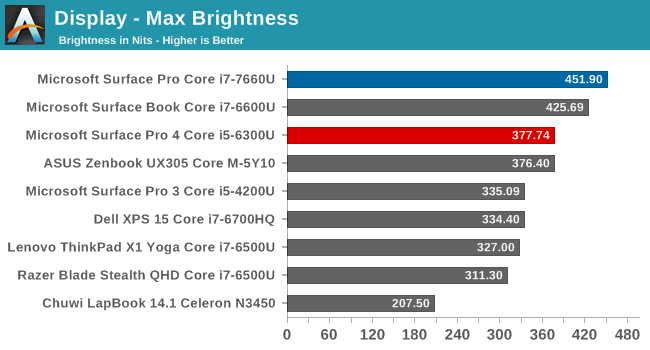
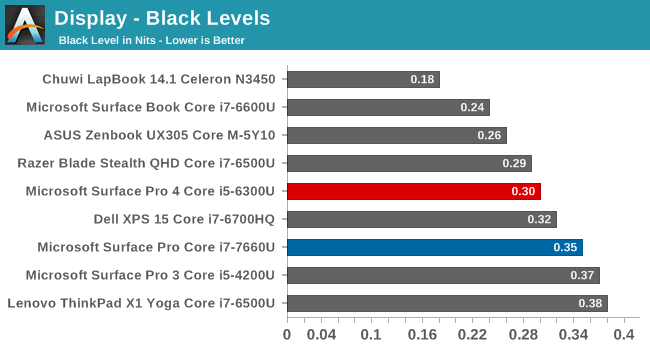
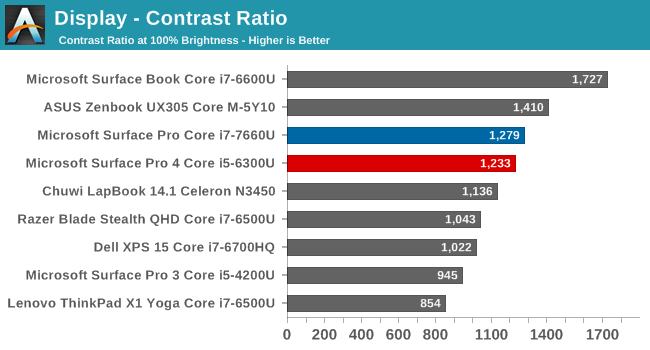
Any time you need to use a laptop or tablet outside, having a very bright display can be a very nice boost to usability. Here we see the Surface Pro has an outstanding 451 nits of brightness, making it one of the brightest PCs we’ve seen. Despite the high brightness, the black levels are still quite good, leading to a contrast ratio of 1279:1. It’s not quite Surface Book levels, but it’s still a great result. For those that want to use the device in a dark room, the display goes all the way down to 4 nits as well.
Grayscale
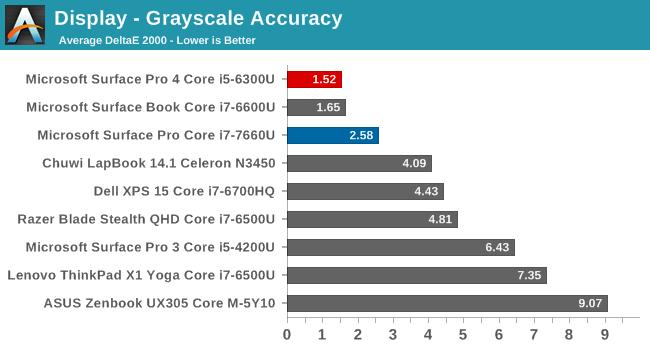
In sRGB mode, the grayscale results are good, but not perfect. The red levels drop off as the brightness increases, leading to a slightly cool display. The gamma levels are very close to the 2.2 level though, with some issues near 0% and 100% only. The model we received for review is a pre-production unit, so it’s possible the grayscale will be more accurate on shipping versions, or it could be because of the adjustable gamut. The average is still fairly good, but it's measurably worse than the Surface Pro 4 we've tested, and does cross the 3.0 level closer to 100% brightness.
Gamut
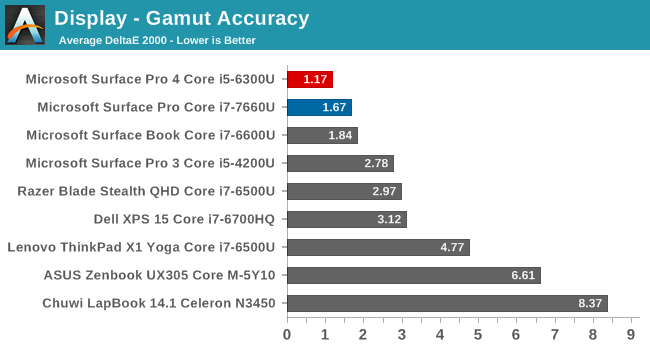
We’ve switched to 4-bit levels for the saturation sweeps, which is more accurate, but makes it difficult to see the gamut coverage clearly, so this test just shows the 100% levels to portray how much of a gamut the display can cover. You can see that the Surface Pro almost perfectly covers the sRGB color space.
Saturation
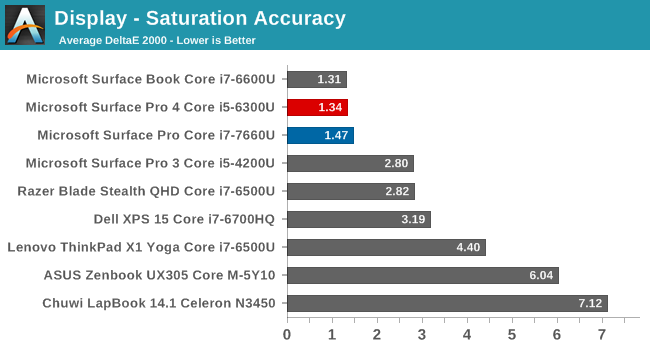
Although not quite hitting the amazing average of the Surface Pro 4 and Surface Book, even with the more demanding 4-bit steps on the saturation sweep, the Surface Pro is one of the best devices we’ve tested.
Gretag MacBeth
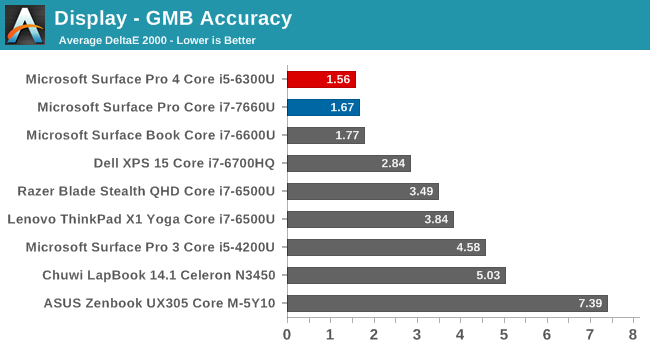
The colorchecker is the most comprehensive test, testing many more colors outside of the primaries and secondaries, and including the skin tones. Once again, the Surface Pro is one of the best devices we’ve tested.
Enhanced Mode
As stated above, the Surface Pro now includes an enhanced sRGB mode. It remaps the color tones slightly, but keeps it within the sRGB color space. It’s not going to be as accurate as the sRGB mode, which we just saw is very accurate to the sRGB gamut, but the enhanced mode is likely to provide many people with the more pleasing look that gives a bit more pop to the colors.
We’ve run the enhanced mode through the display testing as well to see what kind of effect it has on the display.
First off, you can see that the gamma is much lower than it should be. That’s not a surprise with the explanation Microsoft provided earlier on what the enhanced mode is, since they wanted to increase the contrast between the colors.
Looking at the saturation sweep, you can see the colors pulled slightly off the axis, with green having a large swing close to 100% green. All of the colors are tweaked somewhat though, especially as they get brighter.
Finally, looking at the Gretag MacBeth test, you can see that, in fact, the skin tones are not affected by this tone mapping, but the blues, reds, and greens are adjusted quite a bit.
Microsoft’s explanation for the Enhanced sRGB mode is exactly true. There is more contrast between colors, and the colors are tone-mapped but skin tones are not changed. It’s nice to see a toggle to still allow sRGB mode if people need to do color critical work, but as we've seen before in other products, many people are likely going to prefer the increased pop from the colors on Enhanced Mode, even though they're not as accurate. Even with this deviation from the sRGB specification, this would still be considered one of the more accurate displays available, considering the Gretag Macbeth dE2000 is still less than three.


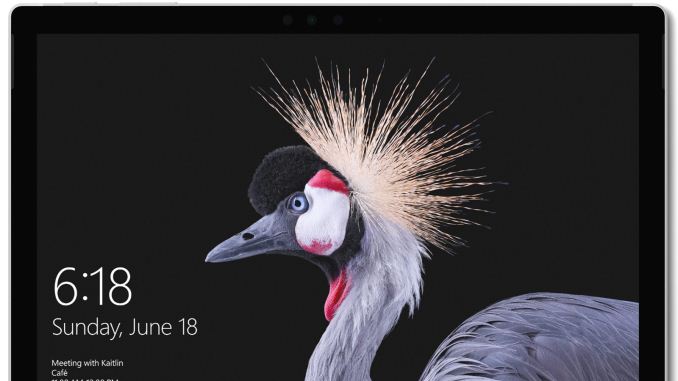
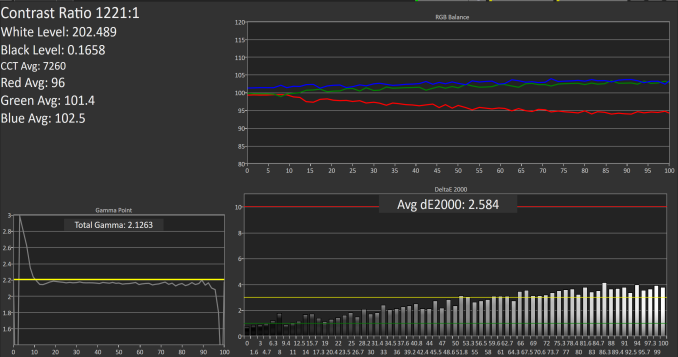

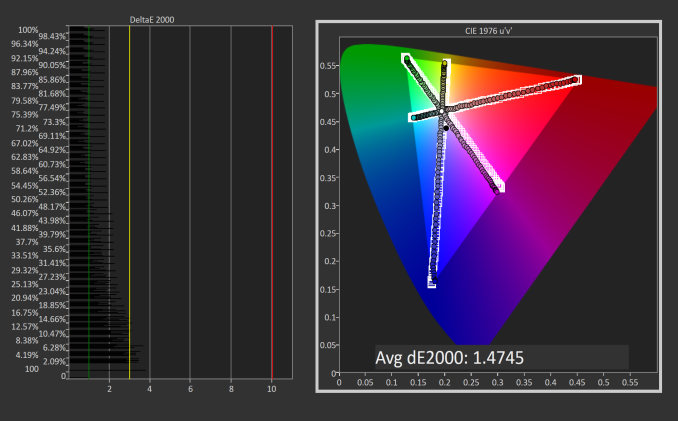

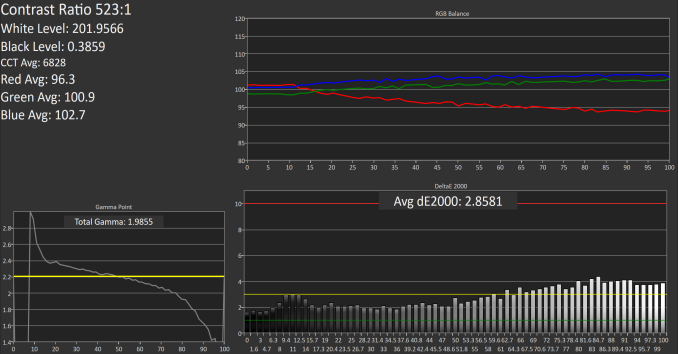
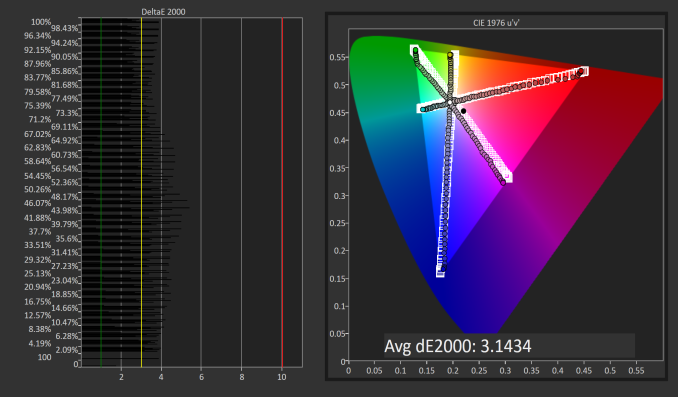
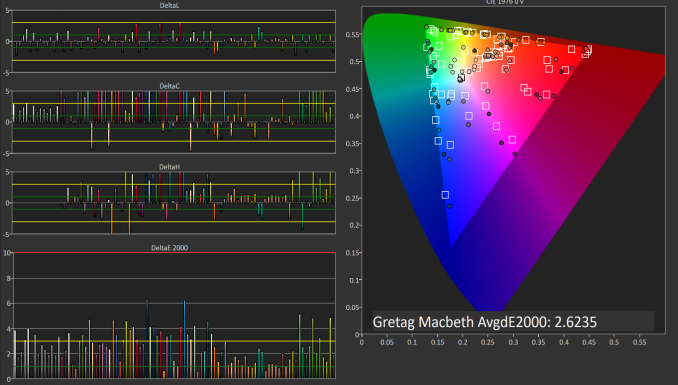








124 Comments
View All Comments
ivan.lazarenko - Friday, June 16, 2017 - link
Brett, thank you for the great review! This evolution approach for new Microsoft Surface Pro is a pretty lame version of what the fans were expecting to be a true successor, the real Surface Pro 5You might like this video hits like the last nail in the coffin and is funny: https://www.youtube.com/watch?v=f3sC82vnR7A
UtilityMax - Saturday, June 17, 2017 - link
I have never been fan of a "laptop" that's as unstable on your laps as the Surface Pro 4, and a "tablet" that's as thick as heavy as the Surface Pro, and with such relatively poor touch GUI and the lack of much tablet apps. In other words, it was a poor laptop, and a poor tablet. The new one looks like more of the same. I'd rather by myself a Lenovo Yoga 700 or 900-series ultra-tin laptops foldable keyboard (yes, real keyboard, not keyboard "covers")serendip - Saturday, June 17, 2017 - link
Unfortunately yes, most tablets make poor laptops. Large Windows tablets also make poor tablets because they're heavy and Windows still isn't touch friendly. I'm a masochist who loves traveling light so I don't mind rocking a cheap Teclast Windows tablet. I couldn't justify spending on a Surface when it costs so much and it doesn't know what it is.damianrobertjones - Friday, August 18, 2017 - link
Why does it have to be defined as either one?mkozakewich - Saturday, June 17, 2017 - link
Okay, so there's never been anything more than rhetoric flying around about the pens. "Oh, it's so much better now!" It sounds good, but then I also hear people swear by the Apple Pencil. Is it possible to benchmark those kinds of things? Would it be possible for you to measure activation forces various pens, as well as maybe latency and pressure-levels-per-gram-of-force?Also, was the original Type Cover Alcantara? I haven't seen a word of it, but that material really surprised me when I first encountered it. It seems like it couldn't have been, because everyone is going gaga over this iteration.
Brett Howse - Saturday, June 17, 2017 - link
I haven't used the Apple Pencil for a while now, but it seems like both are pretty close in terms of usability. We can measure some of the things you mentioned, but not all, at least without new equipment which would have limited value outside of testing a stylus. But I don't have the Apple Pencil to compare it against anyway.The original Type Cover was not Alcantara, although they did release a Signature version with the synthetic fabric after the Surface Pro 4 launched.
Bullwinkle J Moose - Saturday, June 17, 2017 - link
About AnandTechA Message from Our Founder, Anand Shimpi
We are motivated by one thing and one thing only: doing right by you.
--------------------------------------------------------------------------------------
AWESOME!
Can you please investigate my claims that this Laptop is using a Gov't Sponsored Spyware Platform "OR" provide "ANY" EVIDENCE that these claims are incorrect without simply deleting my posts without explanation?
I will gladly provide hundreds of examples of spyware/extortionware and malware if you like
Can't wait for an HONEST review
THANKS!
Bullwinkle J Moose
mrbofus - Saturday, June 17, 2017 - link
"But it seems like wasted space to offer a mini DisplayPort connecter over a USB-C port which could easily handle DisplayPort duties (and so much more). But it seems like wasted space to offer a mini DisplayPort connecter over a USB-C port which could easily handle DisplayPort duties (and so much more). "It would also be nice if they got rid of the proprietary power connector and used USB-C. Two full USB-C ports and a USB-A port would have been a perfect port combination, in my opinion.
simard57 - Wednesday, June 21, 2017 - link
as someone that trips over the power cable too often, I appreciate the magnetic connector.do agree with the comment regarding replacing Mini Display Port with USB-C but that would be dependent on cost impact.
Gunbuster - Saturday, June 17, 2017 - link
Can you test Wi-Fi with Bluetooth in use? I'm wondering if they ever fixed the (extra) poor performance with it doing both...